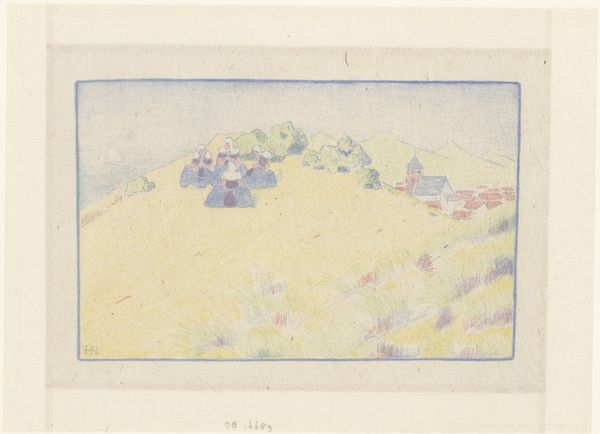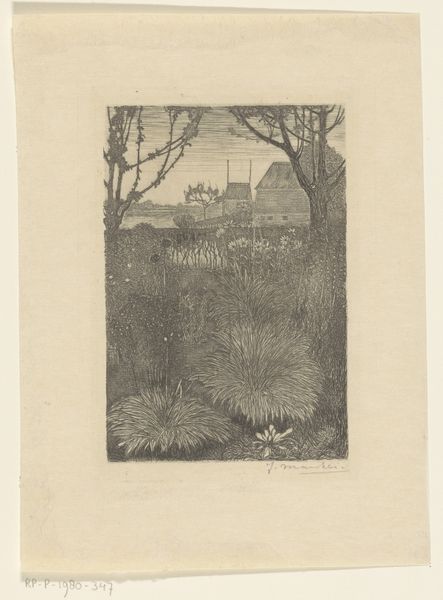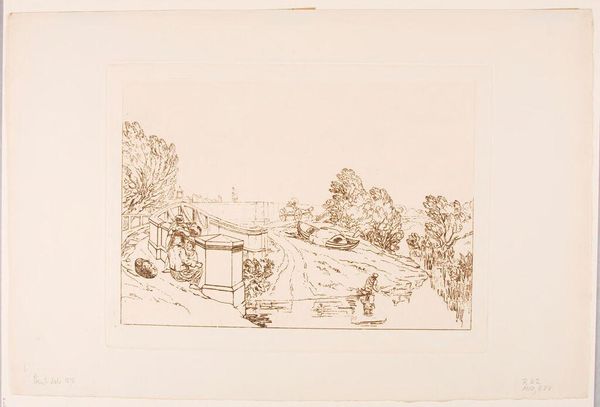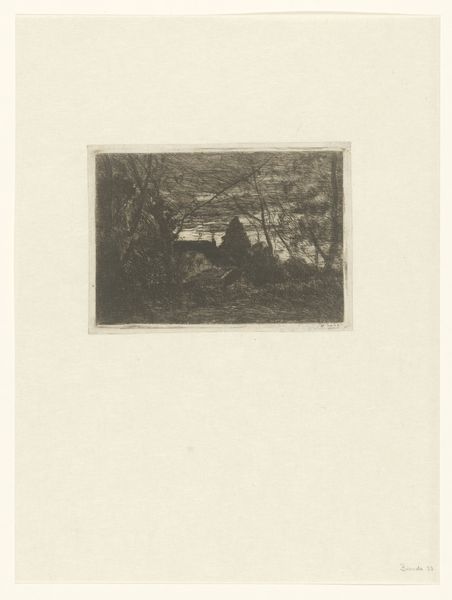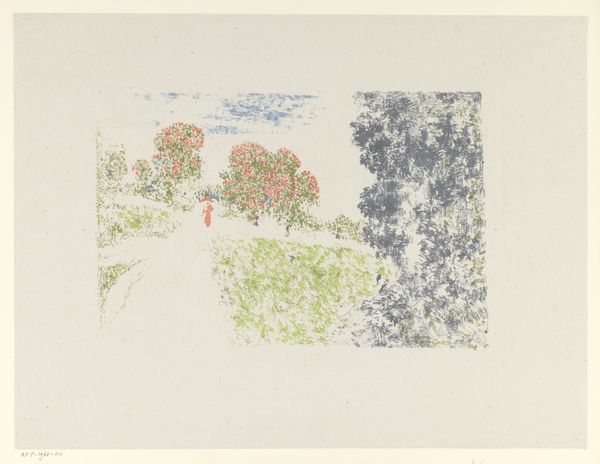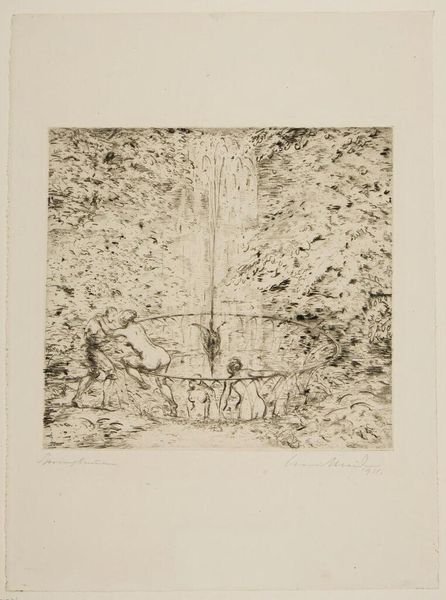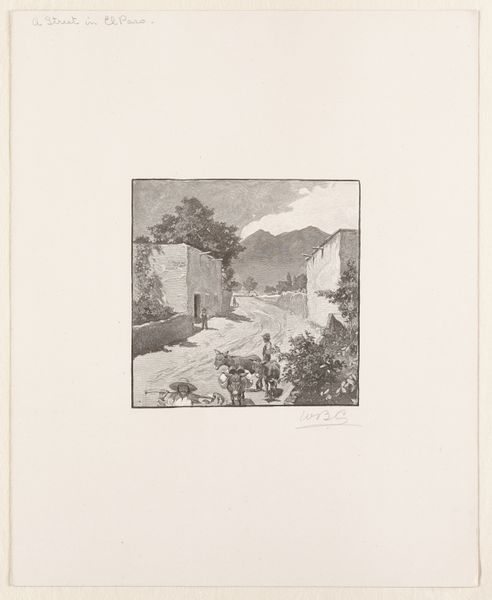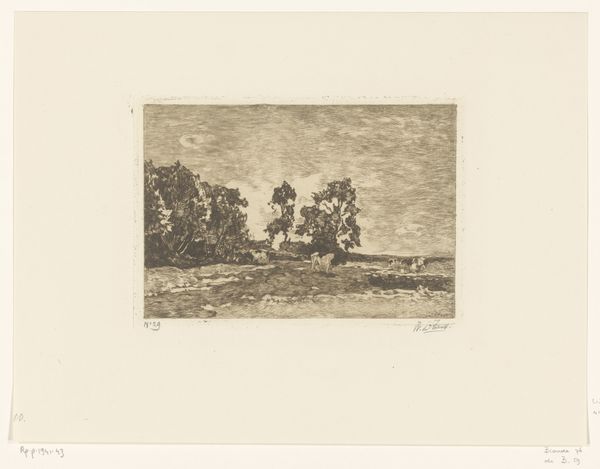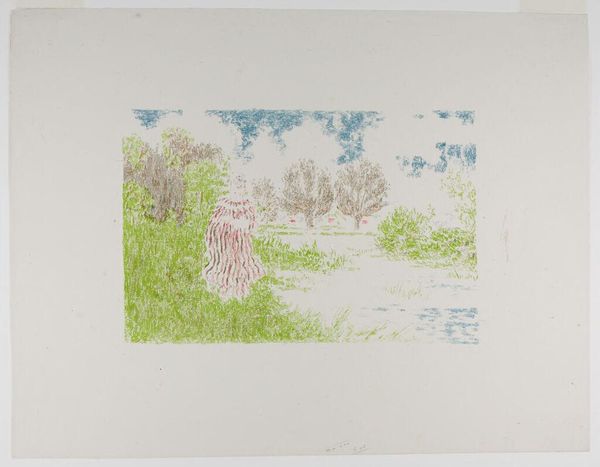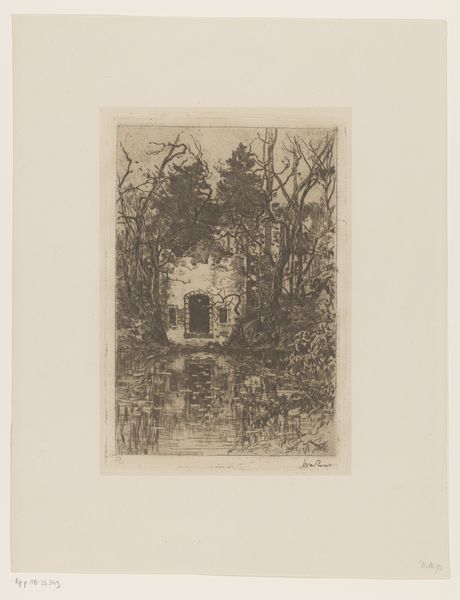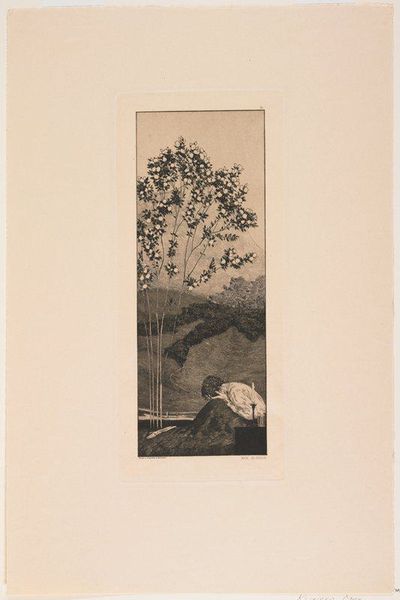
print, woodcut
# print
#
arts-&-crafts-movement
#
landscape
#
pop art
#
england
#
woodcut
#
naive art
#
watercolour illustration
#
northern-renaissance
Dimensions: 8 × 7 1/2 in. (20.32 × 19.05 cm) (image)12 × 9 7/8 in. (30.48 × 25.08 cm) (sheet)
Copyright: No Copyright - United States
Editor: This is "Home," a woodcut print made around 1919 by Hall Thorpe. I’m really drawn to its simplistic rendering and muted color palette. What particularly strikes me is its idealized vision of rural life. What social commentary do you think might be woven into this portrayal of 'Home?' Curator: That’s a very astute observation. Thorpe created this print during a time of significant social and political upheaval after WWI, within the Arts and Crafts Movement. How might this influence your interpretation of this imagery? Editor: I hadn't considered it that way! The Arts and Crafts movement rejected industrialization, longing for a return to pre-industrial skills. Perhaps “Home” embodies that rejection, becoming a symbol of a simpler, idealized past threatened by modernization. Is this accurate? Curator: Precisely. And what could the stylistic choices say about the consumption of art? Woodcut, with its accessibility and handmade quality, served the movement’s egalitarian ethos. Further, consider that landscape art often served to solidify ideas about national identity and ownership of land. Given England's colonial power at this time, whose "home" is he actually depicting and for whom? Editor: So it's more than just a pretty picture; it's steeped in social commentary. It challenges the industrial world and perhaps unintentionally references questions of colonialism through this romanticized lens. I hadn't initially seen the complicated nature of this simple "Home." Curator: Absolutely, that interplay of artistic vision, the cultural milieu, and social issues is key to understanding art’s lasting power. We can't see artworks outside their time. Editor: This has expanded how I'll approach similar artworks, always considering the societal forces that shaped their creation and reception! Thanks for the different perspectives.
Comments
minneapolisinstituteofart about 2 years ago
⋮
Published in London just after World War I (1914–18), this print was so popular that Hall Thorpe later made a smaller, cheaper version for broad distribution. He learned woodcutting as a newspaper illustrator in Sydney, Australia, in the 1890s, when articles were still illustrated with wood engravings. That job would have taught him to translate scenes into patterns of light and dark, a skill apparent in his trees.
Join the conversation
Join millions of artists and users on Artera today and experience the ultimate creative platform.

